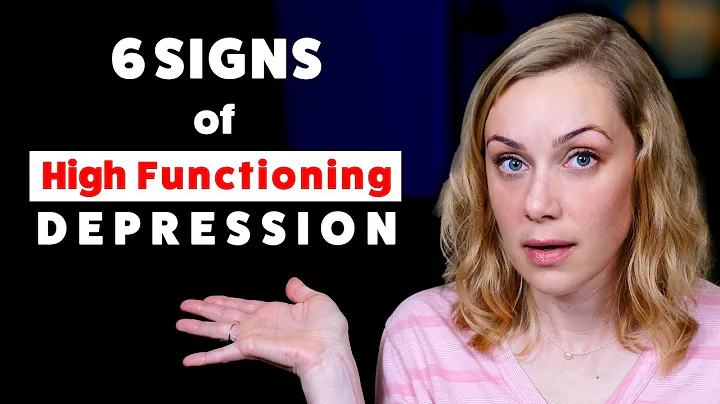The law of feeling: The law of feeling is mainly reflected in sensation and its changes.
(I) Sensory and sensory threshold
sensation is caused by the action of a certain stimulant on the sensory organ, but not any stimulant can cause sensation. For example, people cannot see the dust falling on the skin, nor can they feel its weight. Therefore, only when it is suitable for stimulant to act on the sensory organ and reach a certain intensity, can the receptor reaction and cause sensation.
This ability of sensory organs to feel suitable for themselves is called sensation. The strength of sensitivity is measured by the size of the sensory threshold.
sensory threshold refers to the amount of stimulus that can cause sensation and last for a certain period of time. It is a basic indicator for testing the size of sensory and is an critical value .
sensibility is inversely proportional to the sensory threshold, that is, the stronger the sensory threshold, the lower the sensory threshold, the weaker the sensory threshold, and the higher the sensory threshold.
For example, people with high visual acuity (visual sensitivity) have better visual refinement and can discover things that others cannot find. Sensory thresholds can vary depending on the nature of the stimulus and the condition of the organism. Sensory thresholds can be divided into absolute sensory thresholds and differential sensory thresholds.
1, absolute sensory threshold and absolute sensitivity
absolute sensory threshold refers to the minimum amount of stimulation that can just cause sensation. From the perspective of experimental psychology , the absolute sensory threshold indicates that the stimulus can be felt in 50% of the experiments, and the existence of it cannot be felt in 50% of the experiments.
sensational ability to the absolute sensory threshold is called absolute sensitivity (i.e. sensory ability to the minimum amount of stimulation). The absolute sensory threshold is inversely proportional to the absolute sensory. What is the absolute sensory threshold marks the sensitivity of the sensory.
2, differential sensory threshold and differential sensory
differential sensory threshold refers to the minimum difference between two similar stimuli that can cause differential sensations, also known as the minimum perceptible difference.
Different sensitivity is the ability to feel the threshold of differential sensory. Differential sensory thresholds and differential sensory are essentially absolute sensory thresholds and absolute sensory.
is inversely proportional between the difference threshold and the differential sensitivity. The German physiologist Weber contributed the most to the study of differential sensory thresholds.
1834, Weber proposed the famous Weber's law, believing that in sensory changes, although the difference threshold is often due to stimulus category and sensory category, a fixed ratio relationship remains between its difference threshold and the standard stimulus used as comparison, that is, within the range of moderate intensity stimulus, the ratio of the differential sensory threshold to the original stimulus is a constant. The following formula can be used to represent K=△I/I, where I represent the original stimulus, △I represents the enhanced stimulus, and K represents the constant.
1860, Fechner further developed Weber's law. The sensation size caused by the stimulus is the logarithmic product of the K value of the sensory system and the intensity of the stimulus. When the sensory amount grows in arithmetic sequences (1, 2, 3), the stimulus volume grows in geometric sequences (1, 4, 9), and the sensation intensity and the intensity of the stimulus are quantitatively a logarithmic relationship. It is expressed by the formula: S=K·lgI, where S is the sensory amount, I stimulation amount, and K is a constant.
(II) Changes in sensibility and their rules
People's sensibility is not static. In different situations, under the action of different stimuli, under different physical and mental states, under the influence of different experiences, under different age conditions, the sensibility will change, and the direction of sensibility changes is generally the increase or decrease of sensibility.
The sensitivity changes can occur in natural physiological and psychological changes. For example, with age, the sensitivity will also change. The sensitivity in children and adolescents generally show an upward trend, and the decline trend after middle age. Sensitivity will also undergo significant changes under certain stimulation. The rules of sensation are mainly reflected in the changes in sensibility under different stimuli.
1, Sensory adaptation
Sensory adaptation refers to the sensory changes occurring under the continuous action of stimuli. It can cause an increase in sensitivity and a decrease in sensitivity.
Most of the feelings of adaptation are manifestations of olive adaptation. The so-called "When entering the room of zhilan, you will not smell the fragrance for a long time; when entering the abalone, you will not smell the smell for a long time" is a manifestation of olfactory adaptation.
Visual adaptation is manifested in two aspects: light adaptation and dark adaptation. light adaptation refers to entering the light from the dark, and you will feel dazzling at the first moment and find that you can't see anything clearly. After a few seconds, the vision returns to normal due to the reduction of the sensitivity of the visual organs to strong light. For example, walking from a dark cinema to a sunny day has this adaptation process. Dark adaptation refers to the phenomenon of entering the dark place from the bright place, beginning to see nothing, and visual recovery after considerable time. When we entered the cinema that was turned off from the bright sunlight, we could see nothing at first. After a few time, we could distinguish the outline of the object. It was no longer pitch black. This was the low light that continuously stimulated the eyes and improved the visual sensitivity. It is easier to adapt to the light than to adapt to the dark.
In daily life, it is difficult for us to feel the phenomenon of hearing adaptation. Only under the action of strong sounds or monotonous sounds can the auditory organs temporarily reduce their sensitivity. The time required for auditory adaptation is short and recovery is fast. Auditory adaptation is selective, that is, adapting only to the sound at the frequency that acts on the ear, and not to adapt to other unacted sounds. If the sound acts continuously for a long time (such as several hours), the auditory sensitivity will be significantly reduced, causing auditory fatigue. Auditural fatigue is different from auditory adaptation, and it takes a long time to recover after the sound stops acting. If this fatigue occurs frequently, it will cause hearing loss or even deafness. If you lose hearing to a small number of sounds, it is called sound gap . If you lose hearing to a larger part of the sound, it is called Yindao. No matter how serious it is, it will be completely deaf.
ttps://www.
ttps://www.html.com/ Among all kinds of sensory adaptations, pain is the most difficult feeling to adapt to, and this characteristic of pain has biological protection significance.
adaptability is formed by organisms during long-term evolution. It has positive significance for us to perceive external things and regulate our own behavior. For example, under the sunlight during the day and under the starlight at night, the brightness is million times different. Without adaptability, people cannot perceive external things in a constantly changing environment and correctly adjust their actions.
Studying adaptation phenomena has positive significance for creating a good working environment. It should be noted that the decrease in sensitivity to stimulation may lead to the loss of individual vigilance and cause unnecessary harm, such as people working in chemical factories being poisoned due to long-term exposure to harmful chemicals.
2, sensory comparison
sensory contrast refers to the phenomenon that the same receptor changes in intensity and properties under different stimuli.
Sensory contrast can be divided into simultaneous comparison and subsequent comparison. At the same time, comparison refers to the sensory changes caused by several stimuli acting on the same receptor at the same time. For example, putting a small gray square on a white background, the small square looks darker. Putting the same gray square on a black background makes it look brighter, which is the result of simultaneous comparison. Even if comparison refers to the sensory changes caused by stimuli acting on the same receptor one after another. For example, after taking bitter medicine, the sugar feels particularly sweet, which is the result of even comparison.
3. The phenomenon of feeling after
After the stimulation stops, the sensory image remains for a while. The post-sensory image includes positive post-sensory image and negative post-sensory image. The positive post-sensory image is the same in nature as the original sensory, while the negative post-sensory image is the opposite of the original sensory.For example, after staring at the white fluorescent lamp intently for a period of time, close your eyes and feel that the lamp is still on in front of you. This is a positive back image; if you turn your eyes to a white wall, you will feel a black image, which is a negative back image.
4. Interaction of different sensations
The interaction of sensations refers to the phenomenon that under certain conditions, various different sensations may interact, thereby causing sensibility to change. Since people often receive information about the environment by multiple channels at the same time, interactions between different sensations often occur.
For example, low light stimulation can improve the sensitivity of the hearing, while strong light stimulation can reduce the sensitivity of the hearing; when you are focused on reading, the sounds around you may not be heard; if a person suffers from toothache, he is most afraid of knocking sounds, because strong sounds can aggravate the toothache; the squeaking sound of a knife scratching the glass can cause goose bumps on the body, causing the skin to feel chilled, etc. Sensory Interaction 's general rule is that weak stimulation can increase the feeling of another sensation, while strong stimulation will reduce the sensitivity of another sensation.
Synesthesia is also a manifestation of sensory interaction, which refers to the manifestation of one feeling that causes another feeling.
There are many forms of synesthesia, among which the synesthesia with color sensation is the most prominent. Color vision can cause temperature perception, such as red, orange, yellow, etc., which have a warm feeling (called warm colors), while blue, blue and purple will have a cold feeling (called cool colors). Color vision can also cause a sense of lightness and heaviness, such as light-colored indoor furniture will give people a light feeling.
5. Compensation of sensation
Sensory compensation refers to the phenomenon that when a certain sensation is damaged or missing, the sensitivity of other sensations increases to compensate. If a blind person loses his visual function, he can understand the surrounding environment through hearing and touch; as long as the pronunciation organs are normal, he can learn to read and even learn to "speak".
can be seen that people with defects in a certain sensory organ, due to the requirements of life and labor, special training and exercise, can greatly improve the sensitivity of their undamaged sensory organs and develop amazingly, so that sensory defects can be compensated.
The great musician Beethoven After losing his hearing, he used his tenacious perseverance to create with his vibration sense, and wrote a large number of world-famous songs.
6. Life practice activities affect the development of sensory ability
The sensory ability that normal people have through inheritance is very small, but there are still certain differences in the various sensory abilities of different people. In acquired life practice activities, sensory ability can be developed through the role of training and experience.
For example, steel makers can identify slight differences in light blue flames very carefully; dye weaver can distinguish more than forty different blacks, while ordinary people can only divide them into four or five. Sensory ability is a potential characteristic of a person, and the realization of this potential characteristic depends on practical activities and subjective efforts.
Auditory sensory and changes
In the hearing threshold range, people are most sensitive to sounds of 1000 to 4000 Hz, and they are also relatively tolerant of sounds in this range. Because the frequency of the sounds people speak is within this range, the sounds that humans have to distinguish from generation to generation are mainly the sounds of language, which has caused this characteristic of human hearing. The sensitivity of human hearing is related to age. Before the age of 20, the sensitivity gradually increases with age; after the age of 60, the sensitivity gradually decreases with age. However, the characteristic of the reduction in auditory perception of elderly people is that the first thing they lose is the hearing of high-frequency sounds. As they grow older, the range of hearing loss gradually develops towards low-frequency directions, and when it expands to the range of medium-frequency, it affects speech and hearing.












